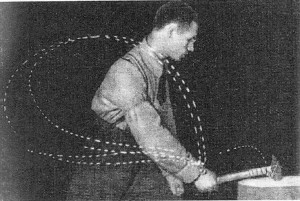Governing policies in the Soviet Union consistently blended new ideas with standing tradition. As such, the conflict between the role of the modern ‘nation’ and the primordial ethnicities is very similar to other conflicts: the role of the government and the church, emphasis on peasantry and the quest to modernize, and Western culture and Soviet traditions.
While the idea of a ‘nation’ was a modern construct, the Soviets hoped to supersede that with the identity of class. From the piece by Fitzpatrick, the origin of the ‘nation’ was developed from the villages uniting under feudal systems and then, eventually, identifying as a singular nation. The role of the clergy was the uniting fashion for these early villages and feudal city-states where religion was a large facet of identity, but some of this was lost in becoming a nation, when nationality became the strongest identification. In the Soviet Union, both class and nationality were prioritized as identifying factors. But, like many of the Soviet programs, this was a top-down forcing of a process that should have been natural, if it was to happen at all.
As Nationalism and Class-ism was standardized, they became stratified and eliminated mobility. This had a special impact given that in the USSR class and nationality came with certain privileges, along with obligations and restrictions. Stratifying the population to such an extent actually damaged the ability for demographics to identify with each other, getting in the way of the Soviet dream of a unified class-consciousness. By trying to influence class and ethnic development toward a homogeneous culture, the Soviets created a number of dissatisfied and unique nations. This collection of independent mentalities would slowly fracture the Soviet Union.




